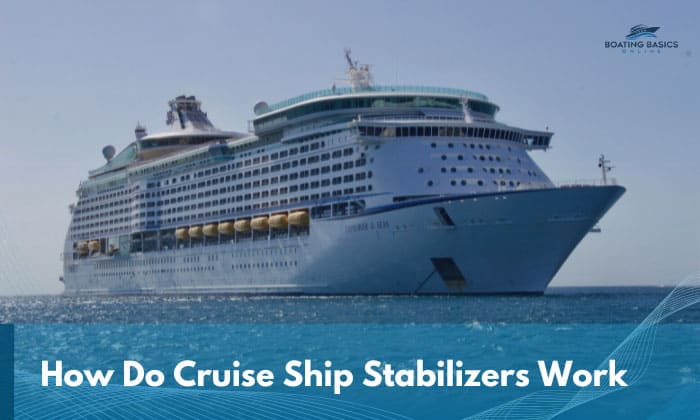
When out at sea, a cruise ship rocks back and forth in tandem with the motion of the waves. This is especially true if the waves become large enough for the vessel to start interacting with them. As passengers, we feel that distinct rolling motion when this happens.
How do cruise ship stabilizers work to reduce that? It ultimately depends on the type. Still, most stabilizers counteract the said motion by exerting an opposing force that resists it.
Table of Contents
What is a Cruise Ship Stabilizer?
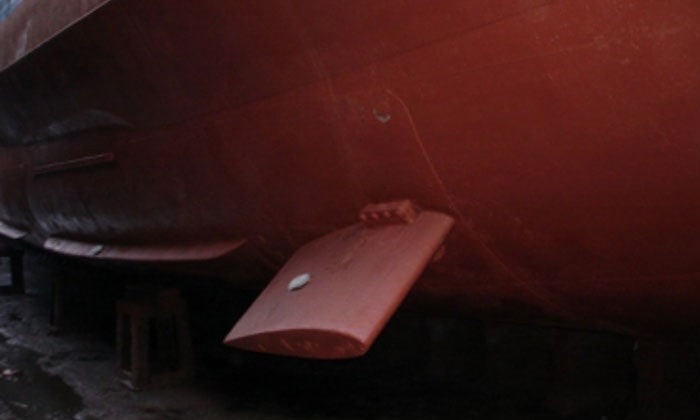
A stabilizer can be any device or system that actively reduces the rolling motion of ships caused by waves.
Cruise ships aren’t the only vessels that use stabilizers. However, we can’t deny that they are the ones that see robust applications of this type of equipment because, for one, a cruise ship’s rolling motion can negatively impact its passengers’ experience.
As such, a cruise ship stabilizer can be any boat balancing system being employed to bring about steady sailing. Fins are the favored stabilizers on cruise ships in these modern times, with some opting for other variants such as zero-speed stabilizers.
How Do Stabilizers Work on Cruise Ships?
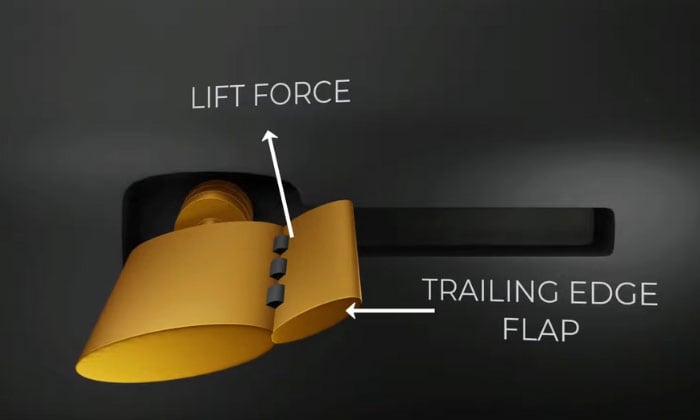
A stabilizer can either be active or passive. Active systems provide the necessary power to create the resisting force, while passive ones usually involve using energy from the ship’s movements to minimize sway.
Since cruise ships prefer retractable fin stabilizers, which are active systems, we will be focusing our attention on them. This type of vessel often installs one or two pairs of fin stabilizers on the sides of the hull and below the waterline to reduce not only the roll motion of the boat but pitch motion as well.
Since they resemble airplane wings, they’ve been called stabilizer wings.
The Basic Principle
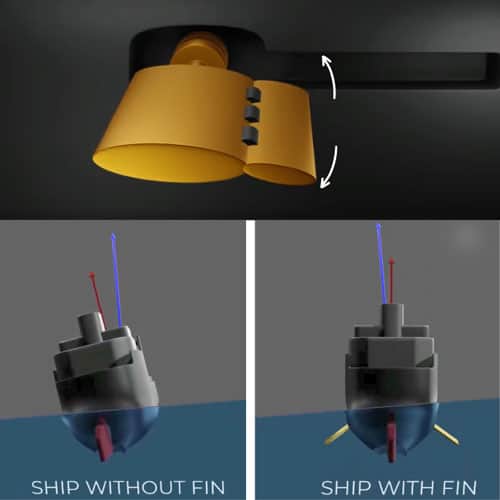
The fins generate lift and drag (aka resistance) as water flows around them. When the ship rolls because of the action of the waves, the fins create that lifting force. The amount of lift force depends on the fins’ shape and size.
Usually, the angling of the fins greatly impacts the resistance they create as well. For example, some studies have shown that angles up to 15° resulted in better resistance. In the end, though, it’s crucial to find the right angle for the fins to bring about the desired stability benefits.
There’s also the matter of speed. At higher speeds, most conventional fin stabilizers perform better because such conditions generate the right amount of lift to effectively decrease rolling motion. That’s not the case at low speeds.
To address this, some ships and yachts utilize zero-speed fin stabilizers instead. Basically, it acts as a “paddle” that provides the said larger lift necessary to mitigate rolls even if the ship is moving slowly.
In a recent 2o22 study of the efficacy of a standard fin stabilizer, it was revealed that it imparts additional resistance to the waves by close to 20% in calm water conditions. In more moderate to choppier waves, though, the resistance is a lot lower.
Fin stabilizers may not be able to completely take care of the rolling and pitching issue, but continuous research and testing, even as I write this, will undoubtedly lead to better versions in the future.
How the Different Types of Stabilizers Work
Fin stabilizers may be the most common kind found in cruise ships, but they’re not the only solutions to ships’ rolling motion. Nowadays, there are numerous types of ship stabilizers (either active or passive), thanks again to continuous research being done to improve their performance.
Here’s how some of the other types of ship stabilizers perform if you’re curious about them.
1. Bilge Keels
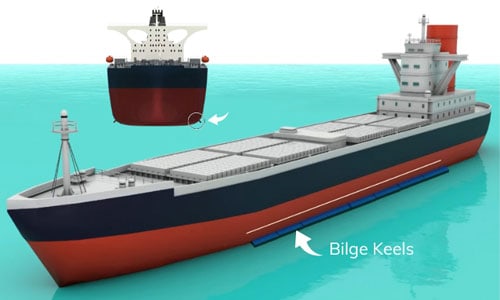
They’re plates that protrude from the lower sides of the hull. Basically, they work by causing the water to move with the ship. This creates the necessary turbulence that dampens the rolling motion.
Bilge keels also see wide usage in fishing boats. They’re designed to improve their seakeeping performance, and one study showed that they’re capable of reducing roll response by more than 11%.
2. Moving Weight Stabilizers
These stabilizers work by using a cylindrical weight that rolls from one side of the ship to the other in response to the rolling motion. A rail guides the enclosed weight while it travels on a sloping floor.
Take note that the weight is purposely designed to lag behind the ship’s own motion. This is for the weight to create the necessary opposing force and generate enough resistance to go against the rolling.
3. Anti-Roll Tanks
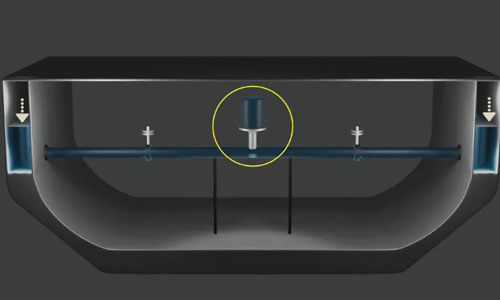
The “U” shape of these tanks makes them distinct from other stabilizers. They’re placed on the sides of the ship and are then filled with water.
Through the work of a pump, the liquid inside the tanks moves from one side to another (think of your coffee sloshing in your mug). This movement counteracts the rolling of the ship.
4. Gyroscopic Stabilizers
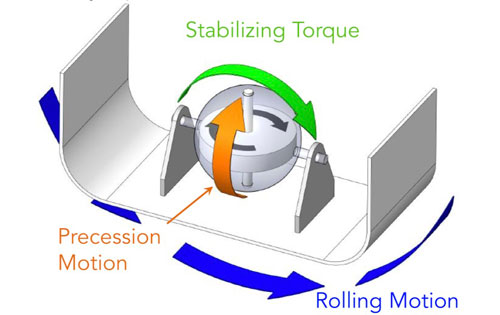
Gyroscopic stabilizers work by using a big round metal mass that spins vertically inside them. This motion creates an anti-roll effect.
Think of how a bike is easier to stabilize if you’re going fast, thanks to the consistent spinning motion of the wheels. The moment you slow down, it becomes less stable and harder to keep upright.
Usually, bigger ships require equally larger gyro stabilizers to reduce if not eliminate the undesired motion mentioned above.
Conclusion
On the whole, if you’re wondering exactly “how do cruise ship stabilizers work?” you’ll have to focus on fin stabilizers, because they have become the most widely used in cruise ships. Thanks to the lift these components generate, with the right sizing and angling, they can sufficiently bring about the desired result.
The fin stabilizer as the definitive cruise ship balancer shouldn’t come as a surprise, especially if we look at the studies that prove its efficacy in lowering unwanted motion passengers might feel while onboard. The same can be said for its other counterparts.

“My intention from the first day establishing Boating Basics Online is to provide as much help as possible for boaters who want to experience a first safe and convenient trip. So feel free to join us and share your beautiful journeys to the sea!”
